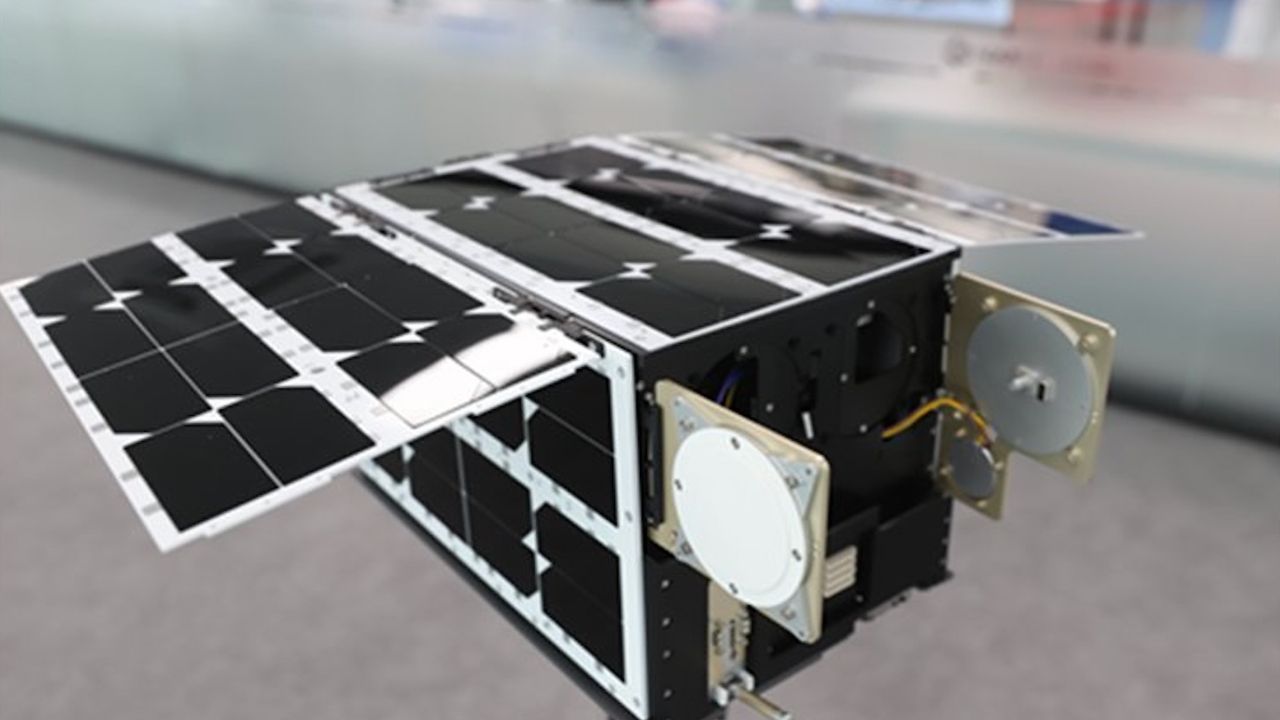
South Korea's K-RadCube satellite has arrived at NASA's Kennedy Space Center (KSC) in Florida ahead of its launch toward the moon next year.
The Korea AeroSpace Administration (KASA) announced the arrival of the K-RadCube in Florida on Aug. 13 via the social media platform X. The milestone comes as preparations for NASA's Artemis 2 mission build. The 10-day mission will send four astronauts around the moon aboard the Orion spacecraft, with launch currently scheduled for no earlier than February 2026, and no later than April 2026.
K-RadCube, a three-unit, 41-pound (19 kilograms) cubesat, will use a dosimeter made of material designed to mimic human tissue to measure space radiation levels across the Van Allen radiation belts. It aims to collect data on radiation exposure levels that astronauts may face when traveling beyond Earth orbit.
🇰🇷✈🇺🇸 K-RadCube, 미국 NASA 케네디 우주센터로 이송 완료!NASA 아르테미스 2호 임무에 동참해우주방사선 환경 측정과 국내 반도체 검증이라는 중요한 임무를 수행합니다.더 자세한 사항은 카드뉴스를 통해 확인해주세요😉#우주항공청 #KASA #KRadCube #NASA #아르테미스2호 #큐브위성 #심우주 pic.twitter.com/VHQEYh8Uk7August 13, 2025
The cubesat also carries semiconductor components such as chips from Samsung Electronics and SK Hynix to assess their radiation resistance in a deep-space environment. The data will also be used to inform future missions.
South Korea's KASA is just one international space agency that will fly cubesats on the mission; Germany's DLR will also contribute its TACHELES cubesat. While Artemis 2 will send astronauts around the moon, the cubesats will have their own science objectives.
K-RadCube will — along with the other cubesat payloads joining for the ride — be released from the adapter that connects the Orion crewed spacecraft to the upper stage of the Space Launch System rocket in high Earth orbit once Orion is free and clear of the upper stage.
As well as piggybacking on Artemis 2, South Korea has its own moon objectives. It aims to put a robotic lander on the moon by 2032 and wants to build a moon base by 2045.
Preparations for Artemis 2 are gathering momentum. Earlier this month, the Orion spacecraft completed propellant loading at KSC and will next be outfitted with its emergency escape system.







